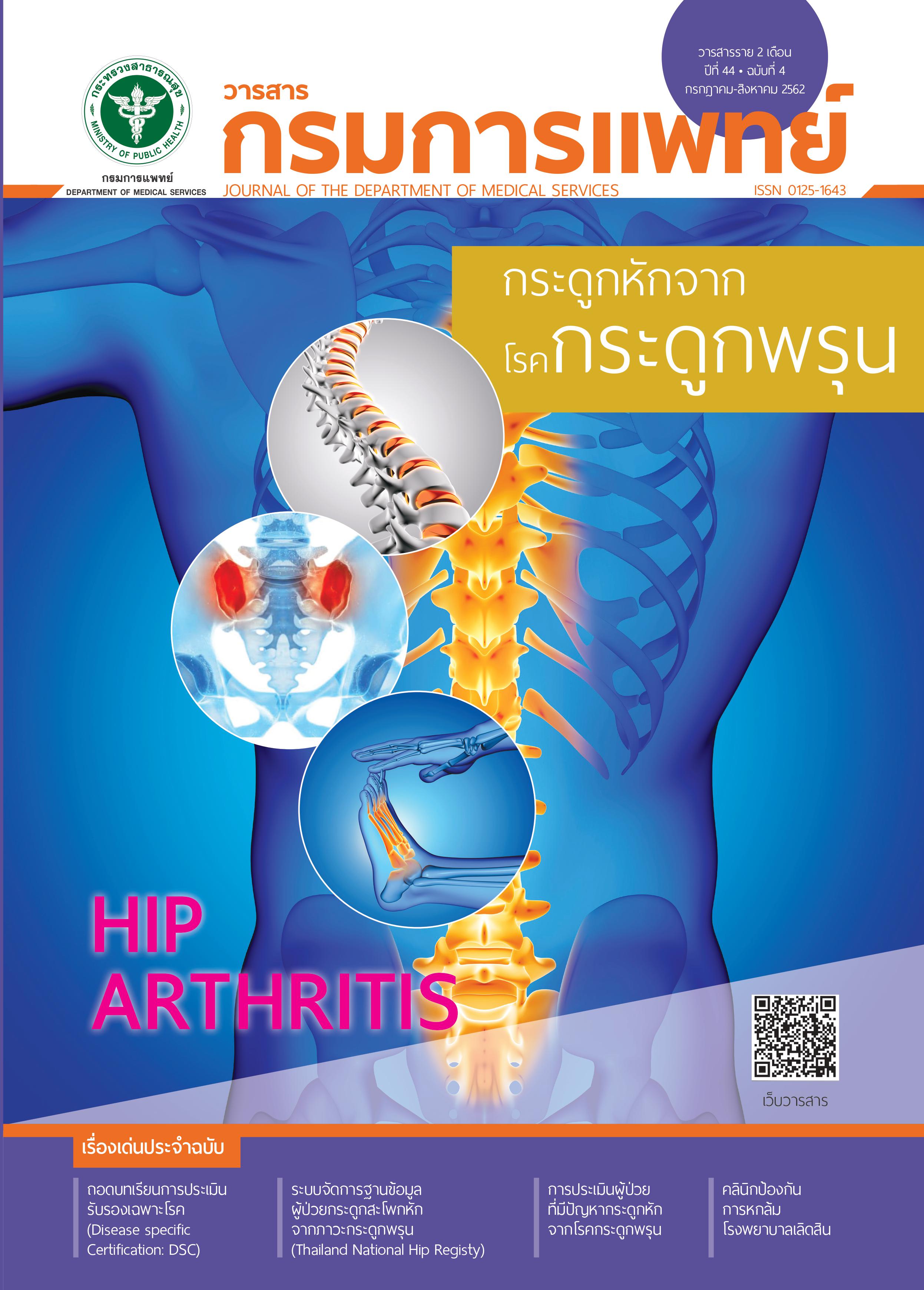Roles of Variables for Causal Inference in Clinical Research
Abstract
การวิจัยคลินิกมีรูปแบบการวิจัยที่หลากหลายขึ้นอยู่กับปัญหาและคำถามวิจัยที่ผู้ศึกษาตั้งขึ้น โดยหลักการของความเป็นเหตุเป็นผลแล้ว อาจแบ่งการวิจัยคลินิกได้เป็น 2 ลักษณะ คือ “การวิจัยเชิงพรรณนา” (descriptive research) และ “การวิจัยเชิงเหตุผล” (causal research) การวิจัยเชิงพรรณนามีเป้าหมายหลักเพื่ออธิบายหรือทำนายการเกิดเหตุการณ์โดยไม่ได้สนใจความเป็นเหตุเป็นผลระหว่างตัวแปรที่ศึกษา ในขณะที่การวิจัยเชิงเหตุผลมีวัตถุประสงค์หลักเพื่อหาความสัมพันธ์ในลักษณะที่เป็นเหตุเป็นผลระหว่างตัวแปรที่ศึกษา โดยที่ผลลัพธ์หรือความสัมพันธ์ที่เกิดขึ้นนั้นต้องไม่สามารถอธิบายได้ด้วยการมีอยู่ของสาเหตุหรือปัจจัยอื่น
References
Grobbee DE, Hoes AW. Clinical epidemiology: principles, methods, and applications for clinical research. Jones & Bartlett Learning; 2009.
Grobbee DE. Commentary: Epidemiology in the Right Direction: The Importance of Descriptive Research. Eur J Epidemiol 2004; 19: 741–4.
Jager KJ, Stel VS, Wanner C, Zoccali C, Dekker FW. The valuable contribution of observational studies to nephrology. Kidney Int 2007; 72: 671–5.
Fives A, Rusell DW, Kearns N, Lyons R, Eaton P. The Role of Random Allocation in Randomized Controlled Trials: Distinguishing Selection Bias from Baseline Imbalance; 2013.
Rothman KJ, Greenland S. Causation and causal inference in epidemiology. Am J Public Health 2005; 95: S144–S150.
Moons KG, Royston P, Vergouwe Y, Grobbee DE, Altman DG. Prognosis and prognostic research: what, why, and how? Bmj 2009; 338: b375.
Miettinen OS. Epidemiological Research: Terms and Concepts. Springer Netherlands.
Flannelly LT, Flannelly KJ, Jankowski KRB. Independent, dependent, and other variables in healthcare and chaplaincy research. J Health Care Chaplain 2014; 20: 161–70.
Schisterman EF, Cole SR, Platt RW. Overadjustment Bias and Unnecessary Adjustment in Epidemiologic Studies. Epidemiol Camb Mass 2009; 20: 488–95.
Lee PH. Should we adjust for a confounder if empirical and theoretical criteria yield contradictory results? A simulation study. Sci Rep 2014; 4. doi:10.1038/srep06085.
Greenland S, Morgenstern H. Confounding in health research. Annu Rev Public Health 2001; 22: 189–212.
Pourhoseingholi MA, Baghestani AR, Vahedi M. How to control confounding effects by statistical analysis. Gastroenterol Hepatol Bed Bench 2012; 5: 79–83.
Elwert F, Winship C. Endogenous Selection Bias: The Problem of Conditioning on a Collider Variable. Annu Rev Sociol 2014; 40: 31–53.
Suttorp MM, Siegerink B, Jager KJ, Zoccali C, Dekker FW. Graphical presentation of confounding in directed acyclic graphs. Nephrol Dial Transplant Off Publ Eur Dial Transpl Assoc - Eur Ren Assoc 2015; 30: 1418–23.
Richiardi L, Bellocco R, Zugna D. Mediation analysis in epidemiology: methods, interpretation and bias. Int J Epidemiol 2013; 42: 1511–9.
Kamangar F. Effect modification in epidemiology and medicine. Arch Iran Med 2012; 15: 575–582.
ชูชาติ คูศิริรัตน์, มาริริน สุภาพรูป, ประดับ มาเทศน์, พรทิพย์ บุญเครือชู,จันจิรา อ้นภู. อิทธิพลของการติดเชื้อในคู่สมรสร่วมกับการได้รับวัคซีนป้องกันไวรัสตับอักเสบบี และการติดเชื้อไวรัสตับอักเสบบี ในสตรีที่มาฝากครรภ์ โรงพยาบาลอุตรดิตถ์. การนำเสนอผลงานวิจัยเพื่อพัฒนาคุณภาพการดูแลผู้ป่วยจากงานประจำสู่ผลงานวิจัยคุณภาพ ประจำปี 2561 โรงพยาบาลอุตรดิตถ์.
Corraini P, Olsen M, Pedersen L, Dekkers OM, Vandenbroucke JP. Effect modification, interaction and mediation: an overview of theoretical insights for clinical investigators. Clin Epidemiol 2017; 9: 331–8.
Greenland S, Pearl J, Robins JM. Causal diagrams for epidemiologic research. Epidemiol Camb Mass 1999; 10: 37–48.
Downloads
Published
How to Cite
Issue
Section
License
บทความที่ได้รับการตีพิมพ์เป็นลิขสิทธิ์ของกรมการแพทย์ กระทรวงสาธารณสุข
ข้อความและข้อคิดเห็นต่างๆ เป็นของผู้เขียนบทความ ไม่ใช่ความเห็นของกองบรรณาธิการหรือของวารสารกรมการแพทย์



